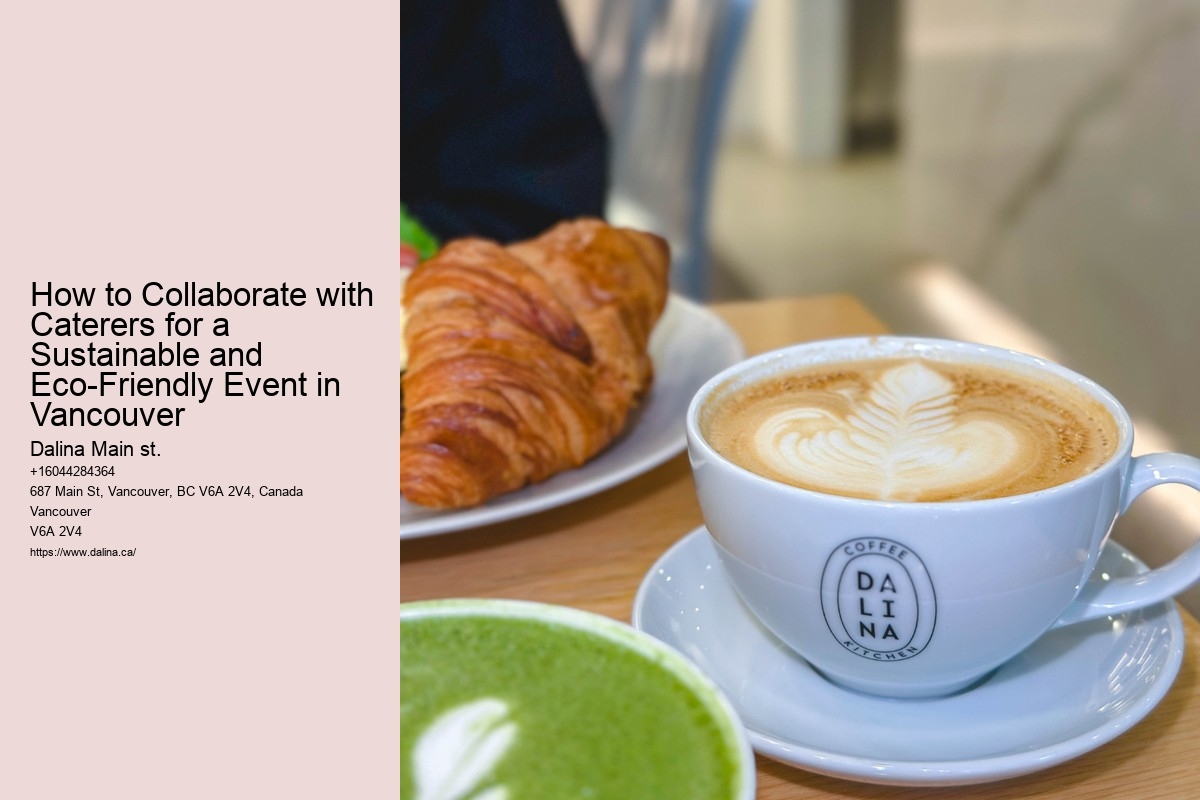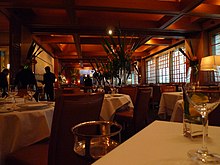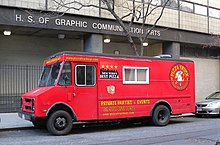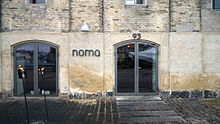Identifying eco-friendly catering options in the local area
When planning a sustainable and eco-friendly event in Vancouver, one of the key considerations (you know, the ones that really matter) is the catering. Explore Wedding catering services here. Now, this ain't just about the food itself, but also how it's prepared, delivered, and served. To make sure your event walks the green walk, you've gotta collaborate closely with your caterers - and that means digging deep into the eco-friendly options in the local area.
First off, sourcing local and organic ingredients is a no-brainer. Vancouver's blessed with an abundance of local farms and markets that can provide fresh, seasonal produce without the hefty carbon footprint of imported goods. So, when you chat with potential caterers, ask 'em straight up where they get their ingredients from. If they're truly eco-conscious, they'll have no problem rattling off the names of local suppliers (and they might even throw in a fun fact or two about each farm!).
Then there's the whole deal with waste management. Let's be real, nobody wants to see heaps of plastic and food waste piling up at an event that's supposed to be "eco-friendly," right? That would be like, totally missing the point! So, your caterer should be on the same page about using biodegradable or compostable dishes and cutlery, and they should have a solid plan for composting food scraps. Plus, if they're really on the ball, they'll avoid single-use items altogether!
Now, don't forget about the transport! Caterers who are serious about sustainability will use fuel-efficient vehicles to get their goods to your event, and they'll make as few trips as possible. It's all about reducing that carbon footprint, folks.
Look, finding the perfect eco-friendly caterer in Vancouver is not going to be a walk in Stanley Park. You'll have to do your homework, ask the tough questions, and maybe even push them a bit towards greener practices (but in the nicest way possible, of course!). But hey, it's worth it when you see your guests munching on that delicious, responsibly-sourced food and knowing you're doing Mother Earth a solid.
Luxury Catering Vancouver
So, go on, start your search, and don't settle until you find a caterer who shares your vision for a sustainable event. It's not just about the food – it's about making a statement that you care about the planet! And who knows, you might just inspire someone else to go green too.
Establishing communication and collaboration with caterers
When planning a sustainable and eco-friendly event in Vancouver, it's essential to get on the same page with your caterers – they're a key piece of the green puzzle, after all!
How to Collaborate with Caterers for a Sustainable and Eco-Friendly Event in Vancouver - Mobile Catering Services
- Custom Catering Menus
- Private Event Catering
- Sandwich Catering Vancouver
- Vancouver Food Catering
- Vancouver Garden Party Catering
- Dinner Party Catering
- Dinner Buffet Catering Vancouver
- Breakfast Catering Vancouver
- Festival Food Catering
- Vancouver Chef-Prepared Catering
- Food Platter Services
- Vancouver Party Catering
- Casual Lunch Catering
- Cocktail Party Catering
- Lunch Catering Vancouver
- Affordable Catering Solutions
- Caterer Vancouver Bc
- Personalized Catering Services
- Dinner Catering Services
- Lunch Catering Services
First off, let's chat about your initial approach. You don't want to come across as too pushy, but you can't be too lax either. Strike a balance; be firm about your event's eco-friendly goals, yet show that you're all ears for their suggestions. It's like a dance where you both lead at different times, yeah?
Next up, the meet-and-greet. Whether it's over a cup of fair-trade coffee or a Zoom call, make sure to express your enthusiasm for sustainability – a little excitement can be contagious! But here's the thing: don't just talk the talk. Show them you've done your homework by suggesting local suppliers, seasonal produce, and waste reduction strategies. And while you're at it, ask about their own green practices. Chances are, they've got some great ideas that haven't even crossed your mind.
Negotiation – ah, that's where the rubber meets the road. You'll want to ensure that the caterer ain't just nodding along but is genuinely on board with sustainable practices. Discuss things like portion control to avoid food waste, compostable or reusable dishware, and water stations instead of bottled water. Remember, though, it's a two-way street. Be prepared to compromise where necessary (budget constraints are real!), but don't throw your eco-principles out the window.
Now, as you iron out the details, keep that communication line wide open. Stay in touch, be responsive to their queries, and don't leave 'em hanging if they need a decision from you. It's about building trust and showing that you value their expertise and input.
And then, when the big day comes around, don't just disappear into the background. Conference Catering Vancouver Pop-Up Catering Vancouver Be present, keep an eye on how things are unfolding, and be ready to tackle any hiccups together. It's a team effort, after all!
In conclusion, when you're aiming for a sustainable shindig in Vancouver, a good rapport with your caterers is crucial. It's not just about laying down the law; it's about fostering a partnership where both parties are excited to make a positive impact. And when you see your eco-friendly vision come to life, it'll be worth all the effort – you'll feel as proud as a peacock!
Customizing a sustainable menu with seasonal and organic ingredients
When it comes to throwing a sustainable and eco-friendly event in Vancouver, one critical piece of the puzzle is the menu. It's not just about picking dishes that sound good; it's about making sure they do good for the planet too! That's where the exciting challenge of customizing a sustainable menu with seasonal and organic ingredients comes in – and trust me, collaborating with caterers on this can be a truly rewarding experience.
First up, you gotta understand that Vancouver has this incredible bounty of local produce (I mean, have you seen the farmers markets in the summer? It's like a rainbow exploded!). So, when I sit down with a caterer, I'm like, "Okay, what's in season?" 'Cause let's be real, there's no point in planning a menu full of avocado toast if it's the middle of winter and those avocados have trekked more miles than I have in my lifetime.
Now, I won't lie, sometimes caterers might try to steer you towards what's easy or what's always on their menu. But that's when you gotta be firm (but friendly, of course) and explain that you're aiming for sustainability here. You want dishes crafted from what's fresh, what's local, and what's got the least carbon footprint. And organic? Non-negotiable! Tapas Catering Services We're talking ingredients that haven't been doused in who-knows-what kind of chemicals.
Oh! And don't forget to chat about waste. I ask caterers about their plan for leftovers 'cause it's a biggie. Do they compost?
How to Collaborate with Caterers for a Sustainable and Eco-Friendly Event in Vancouver - International Cuisine Catering
- Event Staffing Vancouver
- Office Catering Vancouver
- Dessert Catering Vancouver
- Finger Food Catering Vancouver
- Ethnic Food Catering
- Summer Party Catering
- Meal Prep Services Vancouver
- Catering Companies Vancouver
- Charcuterie Catering Boards
- Catering Price Estimates Vancouver
- Party Platters Vancouver
- Celebration Catering Vancouver
- Vancouver Catering Recommendations
- Catering For Non-Profit Events
- Vancouver Catering Menu Ideas
- Vancouver Catering Packages
- Home Catering Services
- Gourmet Catering Vancouver
- Vancouver Catering Equipment
- Vancouver Catering Reviews
Sometimes, there's a bit of back and forth ('cause perfection ain't easy to achieve!), but when you finally nail that menu, it's like a high-five to Mother Earth. And let's be honest, guests will be raving about that killer roasted squash risotto or the heirloom tomato salad that tastes like it's straight from the garden – because, well, it is!
In conclusion (and I'm not just saying this), if you're putting in the effort to throw an eco-friendly shindig in Van, you've got to take the time to collaborate with your caterers. Make sure they get where you're coming from and are on board with your vision. It's not just about feeding folks; it's about nourishing them in a way that's mindful of our beautiful planet. And when it all comes together? It's nothing short of magic!
Implementing waste reduction strategies for catering services
In the bustling city of Vancouver, where the mountains meet the sea, organizing a sustainable and eco-friendly event is not just a trend, it's a necessity! It's about time we take responsibility for the impact our gatherings have on the environment. When it comes to catering services, there's a whole lot that we can do to reduce waste. And let me tell you, it's quite the journey, but oh so worth it.
First off, it's crucial to have an open dialogue with your caterers. You've got to express your desire for a green event – and I mean really lay it down on the table. Sit with them and brainstorm. Say, "Hey, how can we set up a system that reduces waste?"
How to Collaborate with Caterers for a Sustainable and Eco-Friendly Event in Vancouver - Conference Catering Vancouver
- Wedding Buffet Catering
- Vancouver Corporate Event Catering
- Food Presentation Services
- Special Event Catering
- On-Site Catering Vancouver
- Gourmet Food Vancouver
- Craft Services Vancouver
- Holiday Feast Catering
- High-End Catering Vancouver
- Corporate Lunch Delivery
- Vancouver Catering Services
- Birthday Party Catering
- Corporate Catering Vancouver
- Personal Chef Services
- Wedding Reception Catering
- Gourmet Boxed Lunch Catering
- Private Event Catering Vancouver
- Food Truck Catering Vancouver
Now, let's tackle the nitty-gritty. We've got to think about portion control. There's no need (and it's a big no-no) to overcater – that's just asking for food to be tossed. Work with the caterer to estimate the right amount of food based on the RSVPs. And here's a thought, why not go for a menu that uses locally sourced ingredients? It'll cut down on the carbon footprint and support local farmers.
How to Collaborate with Caterers for a Sustainable and Eco-Friendly Event in Vancouver - Craft Services Vancouver
- Vancouver Catering Packages
- Home Catering Services
- Gourmet Catering Vancouver
- Vancouver Catering Equipment
- Vancouver Catering Reviews
- Event Catering Solutions
- Private Chef Vancouver
- Wedding Buffet Catering
- Vancouver Corporate Event Catering
- Food Presentation Services
- Special Event Catering
- On-Site Catering Vancouver
- Gourmet Food Vancouver
- Farm-To-Table Catering
- Mobile Catering Services
- Affordable Catering Vancouver
- Themed Event Catering
- Outdoor Event Catering
Another thing to consider is packaging. If disposables are a must, opt for biodegradable or compostable options. Better yet, if the venue allows, use real dishes and silverware. They add a touch of class and nothing's getting chucked at the end of the night.
Oh, and don't forget about leftovers! Make a plan for them. Whether it's donating to a local shelter or composting, make sure they don't end up in the landfill. Now that's a strategy that not only reduces waste but also warms hearts.
But, uh-oh, what about all the recycling and composting bins?
How to Collaborate with Caterers for a Sustainable and Eco-Friendly Event in Vancouver - All-Inclusive Catering Vancouver
- Small Event Catering
- Beverage Services Vancouver
- Catering Rentals Vancouver
- Custom Catering Menus
- Private Event Catering
- Sandwich Catering Vancouver
- Vancouver Food Catering
- Vancouver Garden Party Catering
- Dinner Party Catering
- Dinner Buffet Catering Vancouver
- Breakfast Catering Vancouver
- Festival Food Catering
- Vancouver Chef-Prepared Catering
- Food Platter Services
- Vancouver Party Catering
In conclusion, making your event in Vancouver sustainable and chummy with Mother Nature is no small feat, but it's entirely possible with a bit of effort and creativity. It's about making choices that are not just good for now, but good for the long run. When you and your caterer work hand in hand, you'll be surprised at how much waste you can avoid. So let's get to it and make our events as green as our beautiful Vancouver!
Exploring plant-based and alternative protein options for menus
When it comes to organizing a sustainable and eco-friendly event in the bustling city of Vancouver, the challenge often lies in the details.
How to Collaborate with Caterers for a Sustainable and Eco-Friendly Event in Vancouver - Themed Event Catering
- Ethnic Food Catering
- Summer Party Catering
- Meal Prep Services Vancouver
- Catering Companies Vancouver
- Charcuterie Catering Boards
- Catering Price Estimates Vancouver
- Party Platters Vancouver
- Celebration Catering Vancouver
- Vancouver Catering Recommendations
- Catering For Non-Profit Events
- Vancouver Catering Menu Ideas
- Vancouver Catering Packages
- Home Catering Services
- Gourmet Catering Vancouver
- Vancouver Catering Equipment
- Vancouver Catering Reviews
- Event Catering Solutions
- Private Chef Vancouver
- Wedding Buffet Catering
Now, you might think, "Where do I even start?" Well, first things first, exploring plant-based and alternative protein options is a fantastic way to reduce the environmental footprint of your event. Animals farming, we all know, can be pretty taxing on Mother Earth, what with all the water, land, and resources it gobbles up (not to mention the methane emissions – yikes!). So, incorporating plant-based alternatives is a smart move.
But how do you get caterers on board? Communication is key! Craft Services Vancouver When you're reaching out to potential partners, make it clear that sustainability ain't just a buzzword for you; it's the heart and soul of your event. Most caterers worth their salt (pun intended!) will be more than willing to collaborate. They might even have some innovative ideas up their sleeve that you hadn't even considered.
Now, don't get me wrong, not all caterers might be familiar with plant-based cuisine. That's where you come in with a bit of guidance (and perhaps a gentle nudge). Suggest popular and versatile ingredients like lentils, chickpeas, and quinoa. These babies can be turned into anything from burgers to salads to mouth-watering stews! And let's not forget the power of tofu and tempeh – they're like chameleons, they are, taking on any flavor you throw at them.
But hold up! It's not just about what's on the plate. Buffet Catering Services Make sure the caterers get the whole "eco-friendly" memo. That means local and seasonal produce, minimal food waste, and sustainable packaging (if there's a need for any packaging at all). Oh, and if they're not already hip to it, introduce them to the concept of compostable cutlery and dishes. It's a game-changer!
In the end, it's all about collaboration. You don't have to have all the answers (nobody does!), but by working closely with your caterer, you can create a menu that's not just delicious but also shouts "We care about the planet!" from the rooftops. Farm-To-Table Catering And trust me, your guests will notice that. They'll taste it in every bite of that beetroot burger or sip of that almond milk smoothie.
So, go on, get out there and make your sustainable event in Vancouver one for the books! And remember, a little plant-based creativity goes a long way. Who knows, your event might just be the talk of the town (in the best way possible, of course)!
Coordinating logistics for composting and recycling post-event
When planning a sustainable and eco-friendly event in Vancouver, it's crucial to think about what happens once the last guest has left. Coordinating logistics for composting and recycling post-event is not just a 'nice-to-have' – it's a responsibility we must take seriously!
How to Collaborate with Caterers for a Sustainable and Eco-Friendly Event in Vancouver - Pop-Up Catering Vancouver
- Vancouver Chef-Prepared Catering
- Food Platter Services
- Vancouver Party Catering
- Casual Lunch Catering
- Cocktail Party Catering
- Lunch Catering Vancouver
- Affordable Catering Solutions
- Caterer Vancouver Bc
- Personalized Catering Services
- Dinner Catering Services
- Lunch Catering Services
- Kid-Friendly Catering
- Event Catering Vancouver
- Fine Dining Catering
- Vancouver Buffet Catering
Now, working with caterers, you've got to lay down the groundwork right from the get-go. You need to find a caterer who's on the same page when it comes to sustainability. It's not about just serving organic grub – it's about what happens to the leftovers and disposables. So, sit down with them (over a cup of fair-trade coffee, perhaps?) and hash out a plan.
First things first, make sure they understand Vancouver's by-laws for composting and recycling. There's no use putting all that effort into sorting if it doesn't meet the city's standards, right? Then, decide who's gonna be responsible for what. Maybe the caterer can look after separating the organics, but you'll need to arrange for a service to pick 'em up. Affordable Catering Vancouver Or, if the venue has facilities, even better! Just make sure there's a clear plan for the end of the night.
And don't forget to think about the bins!
How to Collaborate with Caterers for a Sustainable and Eco-Friendly Event in Vancouver - Affordable Catering Vancouver
- Vancouver Catering Services
- Birthday Party Catering
- Corporate Catering Vancouver
- Personal Chef Services
- Wedding Reception Catering
- Gourmet Boxed Lunch Catering
- Private Event Catering Vancouver
- Food Truck Catering Vancouver
- Small Event Catering
- Beverage Services Vancouver
- Catering Rentals Vancouver
- Custom Catering Menus
- Private Event Catering
- Sandwich Catering Vancouver
- Vancouver Food Catering
- Vancouver Garden Party Catering
- Dinner Party Catering
- Dinner Buffet Catering Vancouver
- Breakfast Catering Vancouver
- Festival Food Catering
Remember, it's not enough to just have a plan; you've got to communicate it, too. Brief the event staff and volunteers about the importance of proper waste disposal. Outdoor Event Catering Maybe even throw in a little incentive for the best 'eco-warrior' of the night. And, of course, let your guests know what's expected of them. A little nudge in the right direction can go a long way.
In the end, it's all about teamwork. You can't do it alone, and nor should you! With a bit of foresight, some candid conversations, and a commitment to the cause, you and your caterer can pull off an event that's as kind to the planet as it is memorable for your guests. Let's be real, there's no planet B, so let's get this right, eh?
Reviewing and sharing the sustainable impact of the event
When planning an eco-friendly event in Vancouver, collaboration with caterers is key to ensuring that sustainability is not just a buzzword but a practice woven throughout every aspect of the gathering. After the last guest has left and the lights are dimmed, the work isn't quite done yet! What remains is an essential step: reviewing and sharing the sustainable impact of the event.
First off, let's be honest: Not every attempt at sustainability is a home run. It's important to sit down with your catering team and dissect what went well and what didn't. Perhaps the locally-sourced organic vegetables were a hit, but the compostable utensils weren't sturdy enough for that hearty stew. It's okay to admit that not everything was perfect, and it's crucial to learn from these experiences.
Now, don't get me wrong, celebrating the wins is just as vital. If your event managed to reduce waste significantly or if the vegan options turned more heads than the meat dishes, shout it from the rooftops! Share these successes on social media, in newsletters, or even in a press release. Who knows, your event might just be the talk of the town (in the most eco-friendly way, of course)!
Including metrics can give weight to your claims. Say, for instance, you've managed to divert 90% of waste from the landfill through composting and recycling. That's not just impressive; it's a tangible testament to the power of thoughtful planning and collaboration. But remember, the numbers need to be accurate; there's no room for making them look better than they are.
Furthermore, it's about creating a ripple effect. By publicizing the sustainable efforts and outcomes, you inspire others in the Vancouver event scene to follow suit. Acknowledging the caterers and other partners who went the extra mile to support the event's green initiatives can foster a community spirit and encourage more businesses to prioritize sustainability.
In conclusion, the journey to a sustainable event is a collective effort, marked by both trials and triumphs. Reflecting on these, and sharing the story of what you've achieved (and what you've learned along the way!), can help propel the entire industry towards a greener future. After all, it's not just about one event; it's about setting a precedent that, hey, sustainability isn't just possible, it's the way forward!

























